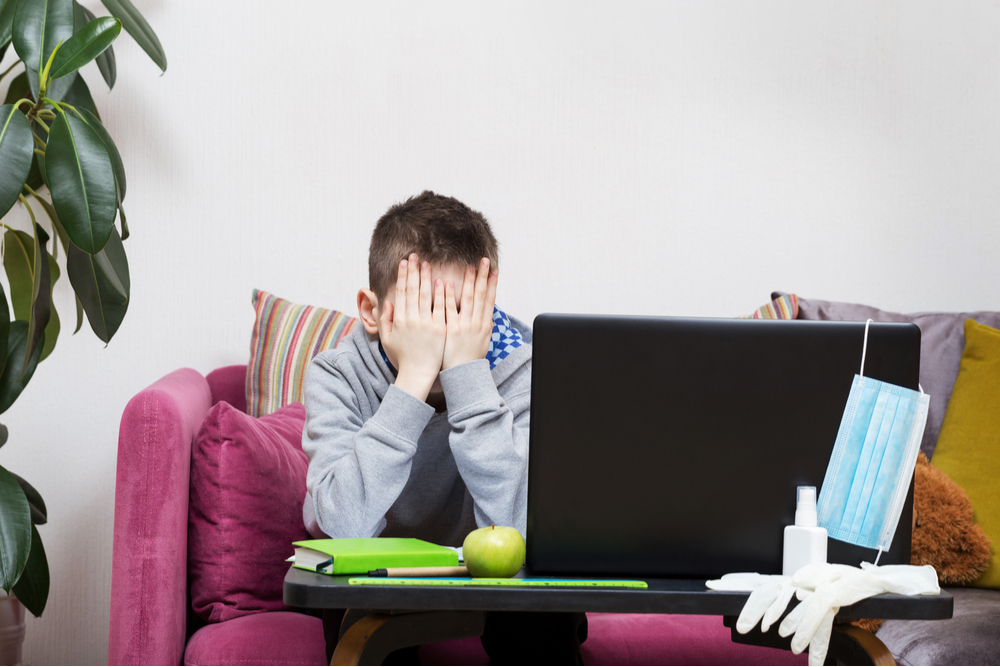
In 1977, Marie Winn first published The Plug-In Drug, a critique of television’s potentially negative effects on children and family: premature exposure to “mature” topics; neglect of healthy physical, mental, and social activities; even altered consciousness from passive content absorption.
Although “screen time” no longer means “TV time” exclusively, and modern screen devices offer far more opportunity for direct participation, “passive” screen-time options still abound. Not just on the still-ubiquitous family television set, but also on the internet and social media. How do you manage your family’s screen time judiciously?
Symptoms of Too Much Passive Screen Time
The children (or adults) in your household may have “viewer addiction” if they:
- Watch programs they aren’t that interested in (and may not even pay much attention to)
- Automatically keep watching after the end of planned programs/clips
- Are neglecting friends, chores, or hobbies
- Procrastinate on addressing real-world problems “until this show/series is over”
- Have difficulty remembering which TV situations/personalities are real, and which are theoretical or fictional
- Feel perceptible cravings to turn on screens at the usual time, even if the regular show isn’t on that day
- Get irritable after missing a regular program/viewing time for whatever reason
- Are becoming perpetually moody, developing chronic eyestrain, or gaining weight
Whether or not any of the above are currently problems in your household, you don’t want television or YouTube clips becoming anyone’s reason for living. Remember, most addictions start small and grow gradually, often so gradually that no one notices trouble developing until it reaches crisis levels.
What to Do About It
Assuming that ridding your home of all televisions, computers, and smartphones is not an option, here are some practical tips to keep passive screen time from taking over.
- Limit or omit viewer subscriptions (good for your budget, too).
- Never turn on a television just to have it on. Plan in advance, as a family, what each member will watch when (preferably limiting everyone to two daily hours maximum); and set a firm rule that the set is turned off when planned programs end.
- Schedule family activities that do not involve passive screen use, two or three days a week. Require that everyone (that includes you, example-setting parent!) leave their phones out of reach and turned off.
- Remember that watching television or videos “together” rarely makes the most of family time. When you do share a viewing hour, schedule discussion/social periods before and after.
- To reduce physical problems from “couch potato slump,” provide seating with good back support at every viewing station. Have a rule that every half hour, viewers get up, stretch, walk a few steps, and focus their eyes on something twenty feet away. And if you must eat while viewing, provide individual dishes (and require everyone to walk to the kitchen for their own refills) rather than leaving a “bottomless” bowl within arm’s reach.
- Emphasize initiative and self-development as household values. The more you believe in these, the less inclined everyone will be to seek the screen by default.
- S.
If viewer addiction is a real problem in your household, consult a therapist: professional help may be necessary to break the screen’s pull and/or deal with psychological issues behind the desire to escape into screen-generated worlds.
NO PASSIVITY HERE
At Shady Oak Primary, we believe in working with children’s natural curiosity and keeping learning as active as possible. If you’re looking for a school that understands the advantages of student participation, play-based learning, and outdoor time, contact us for a thorough briefing on our educational approach.
Blessings to parents and children of all ages!


